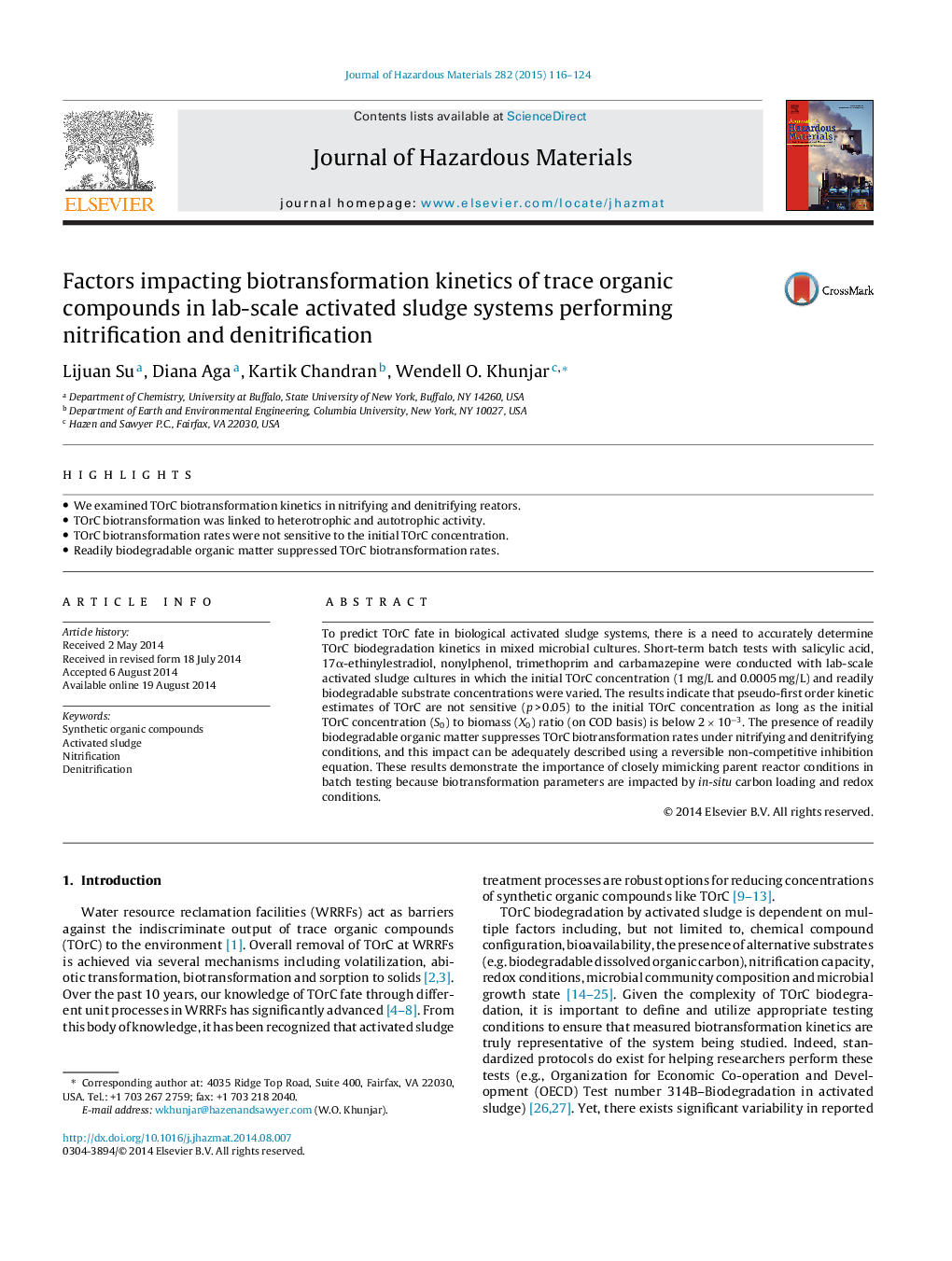| Article ID | Journal | Published Year | Pages | File Type |
|---|---|---|---|---|
| 576486 | Journal of Hazardous Materials | 2015 | 9 Pages |
Abstract
To predict TOrC fate in biological activated sludge systems, there is a need to accurately determine TOrC biodegradation kinetics in mixed microbial cultures. Short-term batch tests with salicylic acid, 17α-ethinylestradiol, nonylphenol, trimethoprim and carbamazepine were conducted with lab-scale activated sludge cultures in which the initial TOrC concentration (1 mg/L and 0.0005 mg/L) and readily biodegradable substrate concentrations were varied. The results indicate that pseudo-first order kinetic estimates of TOrC are not sensitive (p > 0.05) to the initial TOrC concentration as long as the initial TOrC concentration (S0) to biomass (X0) ratio (on COD basis) is below 2 Ã 10â3. The presence of readily biodegradable organic matter suppresses TOrC biotransformation rates under nitrifying and denitrifying conditions, and this impact can be adequately described using a reversible non-competitive inhibition equation. These results demonstrate the importance of closely mimicking parent reactor conditions in batch testing because biotransformation parameters are impacted by in-situ carbon loading and redox conditions.
Related Topics
Physical Sciences and Engineering
Chemical Engineering
Chemical Health and Safety
Authors
Lijuan Su, Diana Aga, Kartik Chandran, Wendell O. Khunjar,
